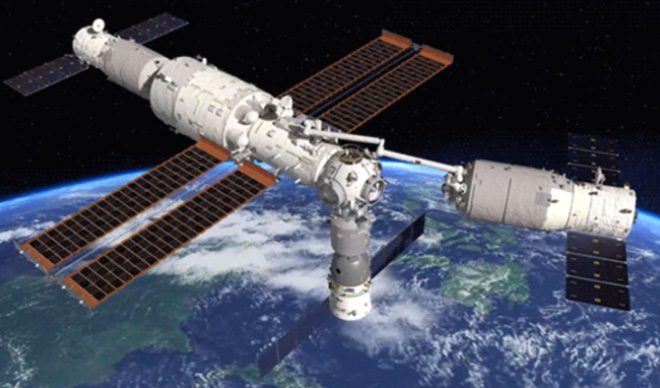In the future, Chinese astronauts may control the robotic arm of the Tiangong space station using brain waves with 99% accuracy.
A research team from China’s crewed space program has developed technology that allows astronauts to control robotic devices using brain waves, as reported by SCMP on March 25. This new technology could revolutionize the operation of the giant robotic arm on the Chinese space station – a sophisticated device with many flexible components.

Illustration of the robotic arm on the Tiangong space station during the cargo spacecraft Tianzhou 2’s maneuver test on January 5, 2022. (Photo: CMSA)
So far, the robotic arm has been controlled by astronauts using joysticks and keyboards. This can be quite challenging in a weightless environment. Meanwhile, current brain-control technologies typically only operate robotic arms with an accuracy of 40% to 80%, which is below the necessary standards for space operations.
However, a simulation of the new brain-computer interface achieves an accuracy of over 99%. In contrast, the average accuracy when using a keyboard is only about 92%.
The new device will be worn on the head and is said to be easy to use. “Even an untrained person can use it to command with relatively high accuracy and speed,” said Professor Wang Congqing and his colleagues. Their research was published in the journal Computer Measurement and Control in February.
China is the first country to implement brain-control technology in space. During the Shenzhou 11 mission in 2016, astronauts Jing Haipeng and Chen Dong utilized a thought-reading device designed to assist them in their tasks.
The new experiment took place at the China Astronaut Research and Training Center in Beijing. Details about the experiment have not been disclosed. However, according to Professor Huang Weifen, the deputy designer of the system, the test data indicates that the new technology has great potential.
The Tiangong space station will utilize brain-control technology after its main structure is completed, expected by the end of this year. The operation of the human brain is incredibly complex, and a significant challenge for this technology is separating useful signals from surrounding noise.
The wearer of Wang’s device needs to look at a simulated robotic arm on a computer screen. Each part of the arm flashes at its own speed, and focusing the eyes on a specific part stimulates brain waves of the same frequency. This helps the thought reader, but useful signals are very rare and mostly weak. To enhance the device’s performance, Wang’s team employs artificial intelligence to detect connections between seemingly unrelated brain wave patterns, thereby extracting additional information.
In the experiment, 35 volunteers moved or rotated a virtual robotic arm using their thoughts, with 11 completing the task without any obstacles. According to the research team, the average accuracy was 99.07%. This rate was slightly lower for 27 inexperienced volunteers, but still reached 98.9%.
The machine can recognize commands almost instantly. The team of experts estimates that the “bandwidth” of information transmitted from the brain to the computer is 150 bytes per minute, nearly ten times that of the old method. It is unclear when the new technology will be used in space missions. However, Wang’s team indicated that it will soon be upgraded to handle more complex tasks, providing higher accuracy and speed.


















































